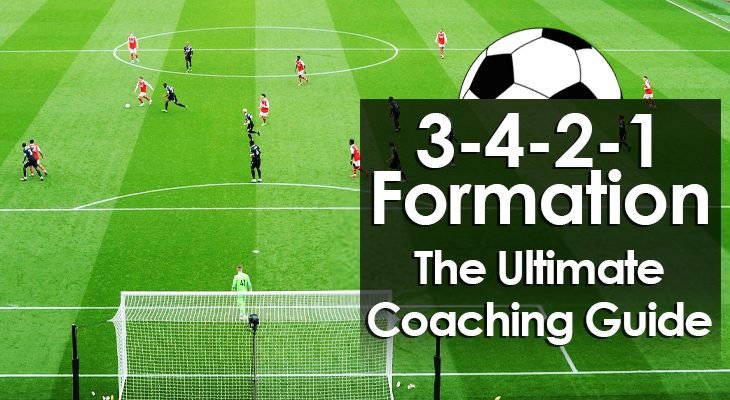3-4-2-1 Formation – The Ultimate Coaching Guide
Playing with three center backs (CBs) in the heart of the defense is a tactical trend that’s existed in the game for decades.
While it’s not the most popular approach, many top teams from the world’s elite leagues opt for three, rather than two central defenders.
The 3-4-2-1 formation is one of the most difficult formations you can come up against.
Chelsea, PSG, Tottenham, Barcelona, Juventus, and many other title-winning sides have had success with variations of this shape.
In this article, I take you through the 3-4-2-1 formation in detail, outlining its strengths, weaknesses, and intricacies.
Whether you want to set up your team in this shape or prepare them for an upcoming opponent, this piece is a must-read.
What is a 3-4-2-1 Formation?
A 3-4-2-1 formation is a balanced set-up with a lot of central focus.
It has a strong core with most of the players occupying the middle areas of the field.
With two center midfield (CM) pivots, attacking wingbacks, and a duo of creative attacking midfielders (or number 10s), the formation is defensively sound.
The attacking midfielders are integral to everything the team does going forward. Without efficient and productive players in these roles, your team may struggle to score goals.
The attacking midfielders provide a direct link to the striker, who has a tough job as the lone center forward.
Deployed at the tip of the spear, the number 9 must work tirelessly to get on the end of crosses, link up with the dual 10s, and finish any chances that come their way.
The ability of your wingbacks can make or break the 3-4-2-1 formation as they need to be capable of covering the entire length of the field for 90 minutes in each game.
Now that you have an idea of what this shape is about, let’s look at its strengths and weaknesses.
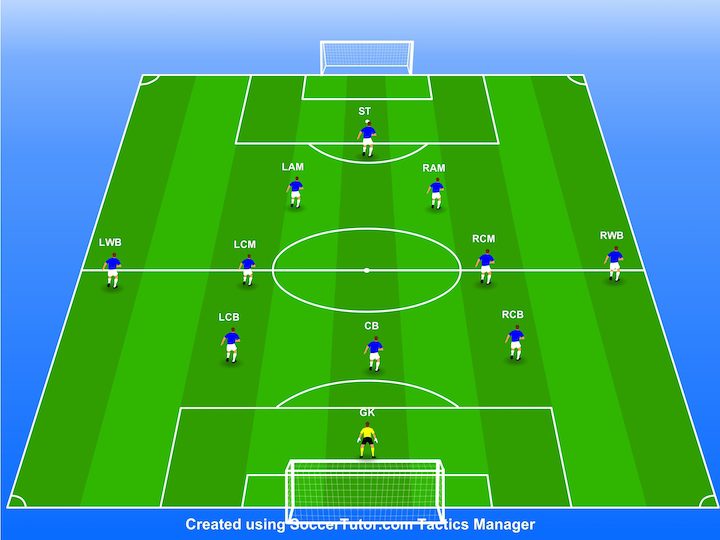
3-4-2-1 Formation Strengths
#1. Strong Spine
Eight out of ten outfield players in the 3-4-2-1 position themselves centrally.
Although the right and left centerbacks and attacking midfielders tend to drift a tad wider, they operate predominantly through the middle.
In attack, this is advantageous in terms of keeping possession.
Firstly, the extra CB in the backline makes it easier for defenders to break the press.
Secondly, the wingbacks are free to push further forward, offering another outlet when building from the back.
Finally, double-pivot CMs can drop deep or step forward to create passing triangles with all players.
Defensively, midfielders may collapse inside, squeezing the opposition out wide.
With so many players occupying central areas, the team can easily defend crosses.
#2. Defensive Solidity
One of the foremost advantages of a three-player backline is defensive solidity.
With two central midfielders in front, there are always players available to track back in defensive situations... and your defense will outnumber the opposition in virtually every scenario.
With a center back trio, one defender is usually able to step out or break the line to commit to a tackle, safe in the knowledge that they have cover.
#3. Dual-Attacking Midfielders
What’s better than one great number 10?
That’s right, two great number 10s!
Dual attacking midfielders are extremely difficult to stop, particularly when they have a license to drift.
In most 3-4-2-1 formations, the attackers play in half-spaces (between the defense and midfield) on the right and left-hand channels of the field.
Here, they can pick up the ball in space and attack from dangerous angles.
The effectiveness of this formation often comes down to the productivity of these players.
Manchester City makes use of two attacking midfielders to great effect in recent years, with the likes of David Silva, Kevin de Bruyne, Bernardo Silva, Phil Foden, and Jack Grealish.
#4. Possession Retention
Possession-based teams have dominated modern soccer for around two decades now.
And the 3-4-2-1 formation helps this as it aims to keep possession of the ball longer.
With four banks of players between the goalie and striker, there is always a passing outlet.
The ability to retain possession coupled with defensive solidity means teams in this shape often need just one chance to win a game.
#5. Versatility
The 3-4-2-1 formation is by no means easy to play.
With so many players in central positions, it requires high-level pros with elite soccer IQs to navigate the space.
Fortunately, when things aren’t going your way, this versatile shape can be altered with slight tactical switches.
With a single positional change or substitution, the formation can transform into traditional shapes like 4-4-2, 4-3-3, or 4-2-3-1.
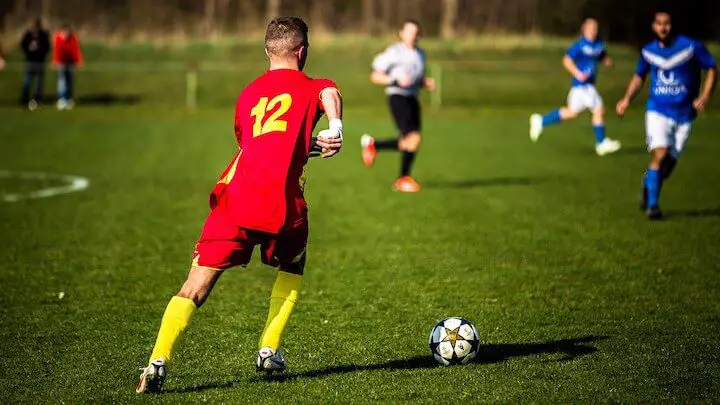
3-4-2-1 Formation Weaknesses
#1. Central Congestion
So here it is, the elephant in the room.
Until now, I’ve discussed all the benefits of the central focus of the 3-4-2-1.
However, this can backfire and become counterproductive for some teams.
With so many players occupying the middle channels, play can get congested, especially when building attacks.
Incorrect positioning, a lack of technical skill, or poor coaching can cause players to get in each other’s way, leading to mistakes and frustration.
Alternatively, the opposition may counter this style by packing numbers into their midfield, causing even more chaos.
Coaches should be wary of this and always have a plan B.
#2. Lack of Width
The only designated wide players in the 3-4-2-1 formation are the wingbacks.
Since their role falls somewhere between a fullback and a winger, the lack of a consistent presence in attacking and defensive thirds can be problematic.
When facing up against low-block defenses, the space to create lies in wide areas.
So against a tight and scrappy opponent, this formation may leave you wanting in terms of wide attacks.
#3. Tactically Complex
Spacing and positioning are crucial if teams want to succeed in this shape.
As a quadrant, players must be able to find space and create numerical overloads.
They must also learn to recognize each other’s movement patterns.
This involves hours of situational drills and practice games during training.
Otherwise, it’s difficult to work efficiently as a unit, stagnating build-up play.
#4. Requires Elite Technicians
Playing in tight spaces requires players with elite technical skills.
Unfortunately, this is the downfall for many coaches trying to use this formation.
All midfield players must be technically savvy and capable of receiving the ball under pressure.
Moreover, players need to be able to use their individual skills to dribble out of trouble or beat their opponent 1v1.
The central focus means midfielders and attackers must be quick decision-makers and good passers.
#5. Isolated Striker
Today, most teams play with a single striker, so that’s not anything new.
However, in a 3-4-2-1 formation, the striker’s main supply comes from the attacking midfielders.
If the opposition successfully shuts down this supply, the striker is left to feed off long balls and crosses from the wingbacks.
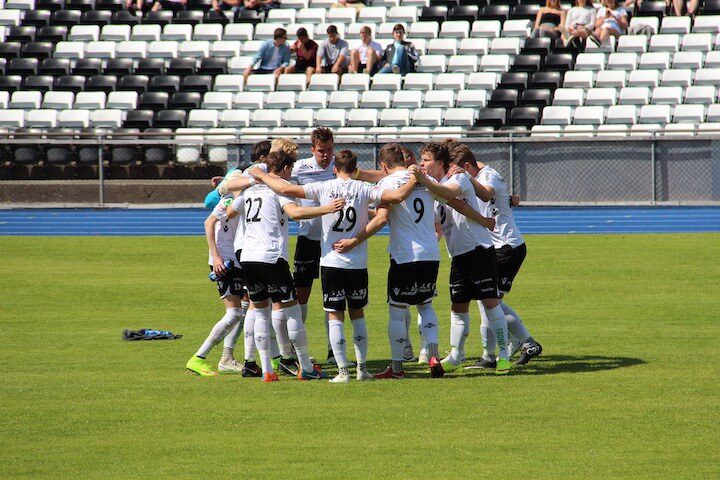
How to Play the 3-4-2-1 Formation
If you like what you’ve read so far, you may consider setting up your team in a 3-4-2-1 formation.
With the right players at your disposal, you can enjoy tremendous success with this shape.
Now, let’s look at how it works.
3-4-2-1 Formation Setup
On paper, this formation is straightforward:
- Flat bank of three centerbacks
- Two center midfielders (double pivot)
- Two wingbacks on either side of the pivot
- Two advanced playmakers
- One striker
Attacking in the 3-4-2-1 Formation
1. Positional Discipline
Centerbacks, double pivot, and striker will all require positional discipline
To sustain attacks and limit gaps in the defense, these players shouldn’t venture too far from their starting positions.
The center midfielders generally operate in a system whereby if one goes forward, the other stays back.
2. Creative Freedom
Most of the creativity comes from the attacking midfielders. Their main duty is to get into positions where they can penetrate the defense and create scoring chances.
This usually comes in the form of offensive overloads which will be available depending on the opposition’s strategy.
However, they usually occur by doubling up on a CB or a defensive midfielder in earlier build-up phases.
3. Using the Wingbacks
Earlier, I briefly mentioned that the wingbacks can make or break this formation.
This is true in both defense and attack.
With three centerbacks behind them, wingbacks have the freedom to get forward.
In offense, wingbacks provide the only width so they must make their presence felt.
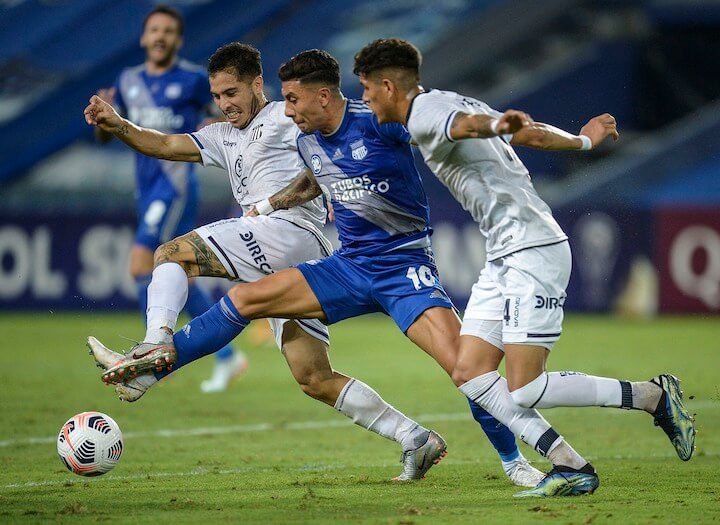
Defending in the 3-4-2-1 Formation
Defending in the 3-4-2-1 formation is more straightforward than attacking.
The backline plays as a unit with three CBs operating in a flat line. Although, some teams instruct the middle CB to drop slightly deeper in somewhat of a sweeper role.
The wingbacks must be good readers of the game and know when they can venture forward and when they should retreat.
Defensively, their main responsibilities are to win the individual battle against the opposition winger and defend the back post.
The central midfield pivot is quite a traditional one, with one player sitting back while the other attacks.
In defensive transition, they tuck in narrowly, closing off passing lanes to strikers.
The attacking midfielders usually press the opposition midfielders or provide extra cover where it’s needed.
Individual Position Responsibilities
Goalkeeper
Most modern teams play with a ball-playing goalkeeper who’s comfortable taking possession.
This type of goalie works perfectly in the 3-4-2-1 formation as the defense often keeps the ball for long periods.
There isn’t necessarily a need for a sweeper-keeper because the defensive line is naturally quite deep.
Center Backs
The center back trio works as a collective, stepping up and maintaining a rigid defensive line.
They must communicate effectively to ensure good positioning and account for strikers at all times.
It’s generally beneficial for each CB to have unique qualities.
For example, one should be quick and capable of sweeping behind to chase through balls. At least one should be an excellent header of the ball. And all three must be comfortable with the ball at their feet and be capable of reading the game well.
Wingbacks
Wingbacks provide the attacking and defensive width in this shape.
They are extremely important in offering balance to the team.
When central attacks get shut down, your team will have to go wide -- relying on the wingbacks to supply crosses and instigate attacks.
It’s also important for the wingbacks to gamble occasionally, making runs to the back post when the ball is on the opposite side.
Defensively, the wingback role is the same as that of a fullback:
- Mark the opposing winger
- Defend wide areas
- Stop crosses
- Defend the back post
However, with additional cover from having an additional CB, a wingback can enjoy more freedom.
Center Midfield (Double-Pivot)
The duo in the midfield pivot play in the traditional sense, keeping things simple as often as possible.
In possession, the pivot players tend to alternate roles dropping back and venturing forward.
However, their primary responsibilities are to retain possession and feed the ball to their more creative outlets.
Out of possession, they shield the backline and compete with the opposition midfield head-on.
These players may not grab the headlines but the work they do can’t be understated.
Center Attacking Midfielders
The attacking midfielders are usually given positional freedom to find space and create numerical overloads in the attacking third.
For example, two narrow attackers can combine with the striker to attack centrally, directly at the CBs.
They have the option to:
- Pass in triangles around the defense;
- Play quick give-and-go passes to skip past them;
- Dribble at the defender until they commit and leave space for a through ball.
The number 10s may also drop deep into midfield or stray wide to pair up with the wingbacks.
Clever movement, game intelligence, and elite technical skills are trademarks of top attacking midfielders.
They must be able to read the game and quickly identify where they can have an impact.
Striker
There are plenty of ways to play as a lone striker.
In a 3-4-2-1 formation, it’s generally best for the forward to play on the last defender’s shoulder.
This pushes the defense back, creating space for the 10s, and opening up opportunities to run in behind and get on the end of a pass.
The striker should be a poacher in the penalty box, getting into dangerous positions to receive neat central passes as well as crosses from the wingbacks.
A traditional, goalscoring striker is the most fitting profile for this formation.
That said, some coaches play with a false 9, encouraging the attacking midfielders to make the penetrating runs.
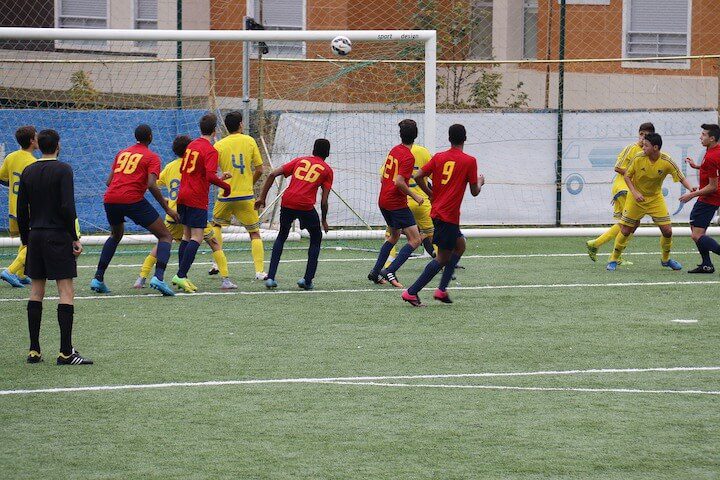
How to Beat a 3-4-2-1 Formation
With talented players, the 3-4-2-1 formation is hard to break down.
But as I alluded to earlier, it's by no means an easy system to use, especially going forward.
So, as with every shape, there are ways to beat it.
Here’s how it’s done:
Identify the Weaknesses
The first area of weakness to exploit is on the wings.
Wingbacks offer the only recognized width in this shape, leaving space in wide areas.
The gaps can be taken advantage of consistently with wingers and overlapping fullbacks.
Another way to capitalize on the space is to target these areas on fast breaks and with diagonal switches of play.
The next way to shut down this shape is to deploy two center defensive midfielders to mark the dual 10s. These players are the critical link to the striker so limiting their supply restricts chance creation significantly.
The Deep-Lying Playmaker
In terms of strategy, a great counter is to use a deep-lying playmaker in front of your defense.
Let’s face it, the midfield in a 3-4-2-1 formation can be hard to penetrate.
So, rather than trying to match up in a like-for-like formation, the playmaker can dictate play from deep, forgoing the need to penetrate directly through the middle.
But note, this might mean giving up possession while attempting to play mid to long-range passes.
The deep-lying playmaker will also need a high-energy partner alongside them.
Choose the Right Counter Formation
Beating this formation comes down to strategy and decision-making.
As a coach, you must make your players aware of where the spaces will be and what key positions your opponent will take up.
Some of the best matchups against the 3-4-2-1 are the 3-5-2 and 4-1-3-2.
Conclusion
If you manage to set out your team in a well-organized 3-4-2-1, you’ll be tough to beat.
With talented technicians in key areas, you’ll also be hard to stop.
Just be sure to focus on midfield spacing during training and choose fit and intelligent players as wingbacks.
You’ll quickly learn whether the 3-4-2-1 formation is the right fit for your team.
But, give your players a few games to adapt.
If it’s not working, don’t fret; there are several more effective shapes that may suit your squad.

